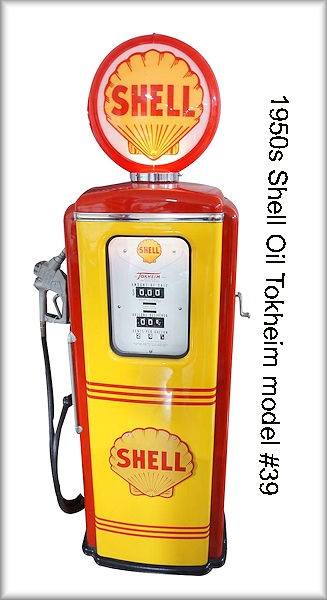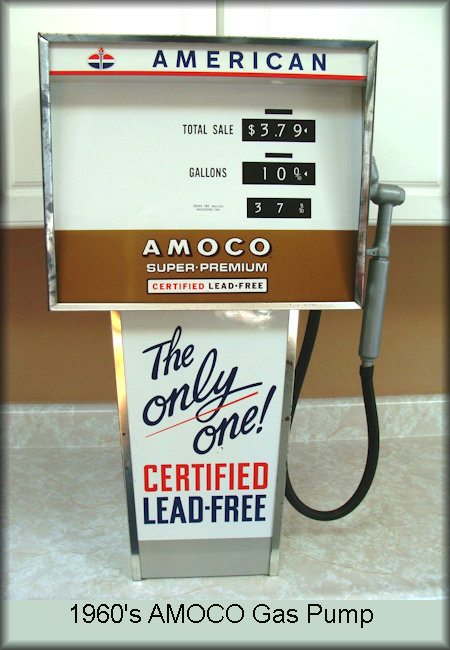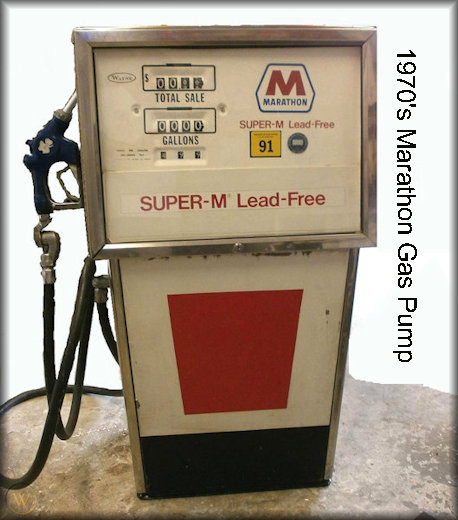



Mobile users:
For best results, view in Landscape mode.
In 1934, the computer meter was developed
by the Wayne Pump Company.
With this invention was the departure
from the traditional clock-face style
replaced instead by a more digital form.
Gallons and prices were displayed directly
on the face and this caught on quickly.
 ..........
..........
By the late 1930’s, all companies used the computer meter.
This was the beginning of the Art Deco period as well,
which embraces the machine aesthetic.
Gas pumps in that era were geometric in shape and featured
stepped and vibrant patterns with stainless steel.
Although the edges were slightly rounded,
the overall pump was squarer in its look.
Decorative globes remained on gas pumps through
the 1950's.

Commonly from the 1950's - 1970's, when you'd drive up to gas
pumps in these stations and would cross over a thin
hose on the ground, a bell would ring in the building.
A smiling attendant would come out, often in uniform with cap,
and he'd ask if you'd want a fill-up.
As the gas was pumping, they would clean the front and rear
windows, check under the hood for oil and water
levels and then the tire pressure. Water and air were free.
Almost every station also did lubrication and auto repairs and had
a hydraulic lift or a grease pit in one of their bays.
A small office was filled with car parts or supplies, and nearby
would be a pay phone and vending machine for soda.
Some stations even gave trade stamps, free gifts like towels or
dishes, free maps and other giveaways.
By the 1960's, gas pumps became more plain and boxy in their
design, and not nearly as appealing as the 1930's gas pumps
with prominent art deco styling.

In the 1970's, unleaded fuels were introduced.
From 1970 - 1990, lead was being phased out.
1970: Congress passed the Clean Air Act.
The EPA was formed and given the authority to regulate compounds
that endanger human health.
1973: EPA mandates a phased-in reduction of lead content in all
grades of gasoline.
1974: EPA requires availability of at least one grade of unleaded
gasoline, in order to be compatible with 1975 make
and model year vehicles.
Lead damages the catalytic converters used in these new vehicles
to control tailpipe emissions.
Catalytic converters are still used in vehicles today.
1996: EPA banned the use of leaded fuel for on-road vehicles
(leaded gasoline was down to 0.6 percent of 1996 gasoline sales).
The greatest change in the gas station experience started in the 1970's,
when gas became scarce and more expensive.
The oil companies realized that it was expensive to provide free maps,
free windshield washings, and free air for your tires.
The energy crisis played a key role
in the economic downturn of the 1970's.

With the OPEC oil embargo of 1973, oil prices jumped 350%,
and the higher costs rippled through the economy.